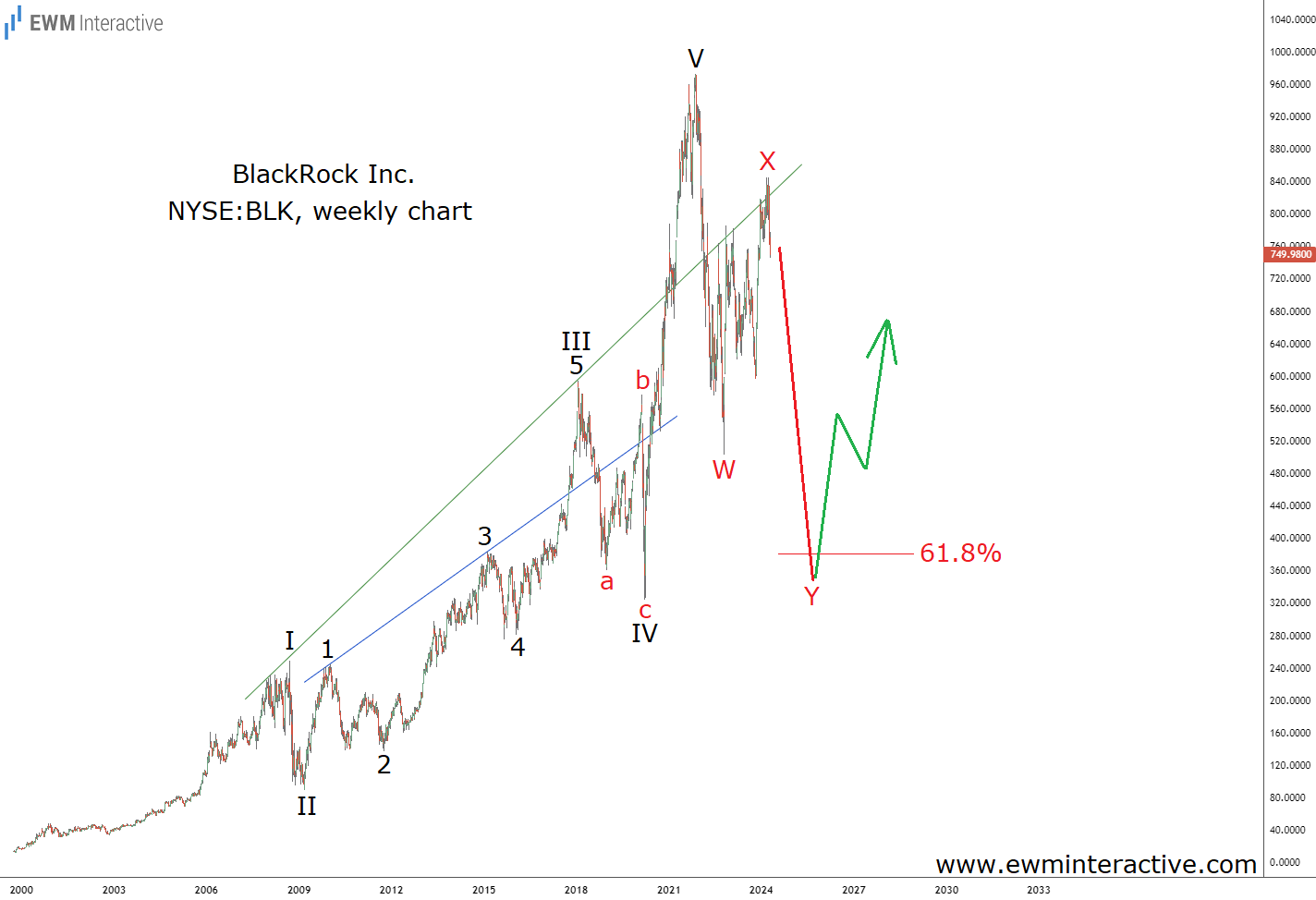As a company whose profits are a percentage of assets under management, it is not surprising that BlackRock (NYSE:BLK) stock rose in 2023 alongside the S&P 500. Between October, 2022, and early-March, 2024, the stock surged from just over $500 to $845 a share. Gladly, Elliott Wave analysis helped us predict this recovery back in June, 2022, when we first wrote about BLK.
In general, however, that analysis was far from bullish. The wave structure indicated that BlackRock’s selloff from an all-time high of $973 in November of 2021 was just the first wave of a bigger correction. A temporary relief rally was to be expected, but another notable decline would then drag the stock below the $400 mark.
Just by looking at BlackRock‘s current price of roughly $750 a share, investors will be forgiven for thinking that such a drop of nearly 50% seems far-fetched. Unfortunately, that’s precisely what the updated chart below continues to imply.
The 22 years between BlackRock‘s 1999 IPO and its record high in 2021 produced a textbook five-wave impulse. We’ve labeled the pattern I-II-III-IV-V, where the five sub-waves of wave III are visible, as well. According to the theory, a three-wave correction follows every impulse. Waves W down and X up seem to be in place already.
If this count is correct, wave Y down has yet to unfold. Its natural targets lie near the support area of wave IV near $380, which coincides with the 61.8% Fibonacci level. Of course, such a big slump would take a general stock market decline, possibly accompanied by a US recession. Well, why not? Have you seen all the macroeconomic indicators flashing red across the board?
Another interesting thing about the chart above is that it very clearly displays the fractal nature of financial markets. We can see virtually the same kind of pattern in two different degrees of the trend. The blue line drawn through the highs of waves 1 and 3 of III has been breached by wave 5 of III, before acting as resistance in wave ‘b’ of IV.
The same way, the green line drawn through the highs of waves I and III has been breached by wave V, before recently acting as resistance in wave X. The similarities between the two structures give us another reason to expect a notable decline in wave Y similar to the once in wave ‘c’ of IV, albeit bigger in price terms. BlackRock will be a real bargain under $400 a share. We remain on the sidelines until then.
